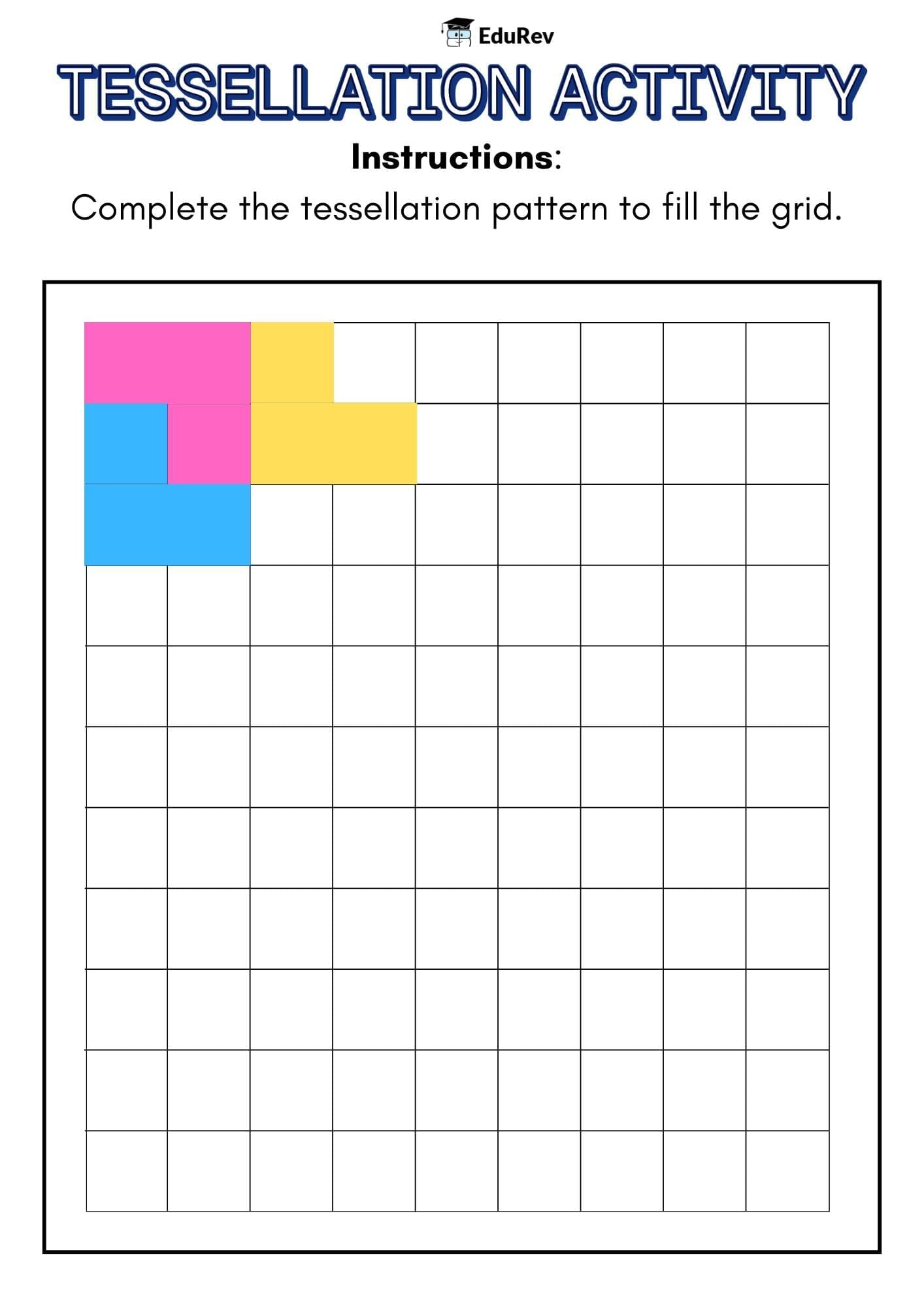Class 5 Exam > Class 5 Notes > Mathematics (Maths Mela) Class 5 - New NCERT > Visual Worksheet: Tessellation
Visual Worksheet: Tessellation | Mathematics (Maths Mela) Class 5 - New NCERT PDF Download

The document Visual Worksheet: Tessellation | Mathematics (Maths Mela) Class 5 - New NCERT is a part of the Class 5 Course Mathematics (Maths Mela) Class 5 - New NCERT.
All you need of Class 5 at this link: Class 5
|
35 videos|276 docs|7 tests
|
FAQs on Visual Worksheet: Tessellation - Mathematics (Maths Mela) Class 5 - New NCERT
| 1. What is a tessellation and how is it created? |  |
Ans. A tessellation is a pattern formed by repeating a shape or a set of shapes without any gaps or overlaps. It can be created by taking a single shape, such as a triangle, square, or hexagon, and replicating it in a way that covers a flat surface completely. Artists and mathematicians often use geometric transformations such as translation, rotation, and reflection to design tessellations.
| 2. Can any shape be used to create a tessellation? |  |
Ans. Not all shapes can form tessellations. Only regular polygons (shapes with equal sides and angles) that fit together perfectly without gaps can create tessellations. Common examples include squares and equilateral triangles. Some irregular shapes can also tessellate, as long as they fill the space without any gaps or overlaps.
| 3. What are some real-life examples of tessellations? |  |
Ans. Tessellations can be found in various real-life situations. Common examples include tiled floors, brick walls, and wallpaper designs. Nature also showcases tessellation, such as honeycomb structures created by bees and the scales of certain fish. Artists like M.C. Escher are famous for their intricate tessellation designs in artworks.
| 4. How do tessellations relate to mathematics? |  |
Ans. Tessellations are closely related to geometry, symmetry, and mathematical concepts. They help illustrate principles such as spatial reasoning and the properties of shapes. In mathematics, studying tessellations can lead to understanding concepts like symmetry, transformations, and the relationships between different geometric figures.
| 5. What are the different types of tessellations? |  |
Ans. There are generally three types of tessellations: regular tessellations, which use only one type of regular polygon; semi-regular tessellations, which combine two or more types of polygons; and irregular tessellations, which use non-uniform shapes. Each type creates unique patterns and can be explored through both art and mathematical study.
Related Searches
















